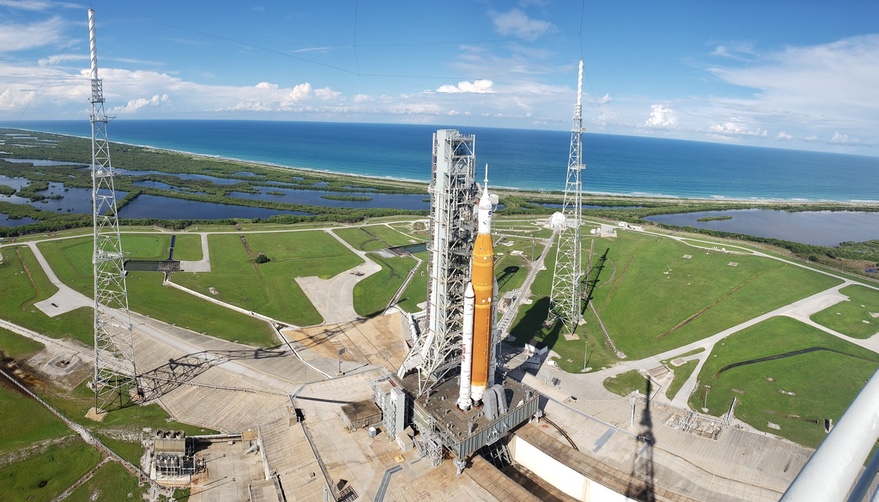Next Artemis 1 launch attempt on schedule for mid-November

HUNTSVILLE, Ala. — Preparations for the next attempt to launch the Space Launch System rocket on the Artemis 1 mission remain on schedule for the middle of November, but agency officials said launch opportunities may be limited if it slips to later in the month because of the Thanksgiving holiday.
NASA and industry officials participating in a panel at the American Astronautical Society’s Wernher von Braun Memorial Symposium here Oct. 27 said preparations for the next Artemis 1 launch attempt remain on track, with a rollout of the rocket from the Vehicle Assembly Building to Launch Complex 39B on Nov. 4.
That would set up a launch attempt on Nov. 14 at 12:07 a.m. Eastern at the start of a 69-minute launch window. NASA has secured backup launch dates of Nov. 16 and Nov. 19.
Those launch dates are within a launch period that opens Nov. 12 and runs through Nov. 27. However, if the vehicle does not launch by Nov. 19 there may be, at best, only one chance to try again before the end of that launch period. Nov. 20 and 21 are not available because of what NASA calls Orion performance constraints, such as a trajectory that would put the solar-powered spacecraft into an extended eclipse.
Other opportunities are available Nov. 22–25 and Nov. 27, but those are close to the Thanksgiving holiday Nov. 24, traditionally a very busy travel period. Airspace closures for a launch would affect East Coast flight corridors off the coast.
“There is an opportunity to get a fourth attempt within that launch period,” said Jeremy Parsons, deputy manager of NASA’s Exploration Ground Systems program, most likely on Nov. 25. A launch that day, he added, would require “a series of discussions that need to occur with the FAA.”
Agency and industry officials remain optimistic they will not need to worry about that additional launch attempt, expressing confidence they resolved issues such as the hydrogen leak that scrubbed the previous launch attempt Sept. 3. That confidence is linked to a tanking test Sept. 21 that did not have similar hydrogen leaks after replacing seals and updating loading procedures.
“I think we have good procedures to go load the tank. I think we’ve got the hardware in excellent shape. And, I think we have a team that’s been put through their paces a number of times and, every single time, gets better,” Parsons said.
Workers are in what Parsons described as the “final phases of closeouts” on the vehicle to prepare for the rollout of Nov. 4. That includes setting up the flight termination system (FTS) on the SLS core stage. Delays in earlier SLS launch attempts required NASA to request, and ultimately obtain, waivers from the U.S. Space Force, which operates the Eastern Range SLS launches from, to what was originally a 20-day life for the FTS.
Despite those earlier waivers, the FTS has the same certified life for this launch attempt. “It was a one-time deal,” said John Honeycutt, NASA SLS program manager, of those waivers. “We have not entertained going to back to them just yet.” The current FTS certification period would cover the first three launch opportunities in November.
The waivers were necessary because the FTS system, notably its batteries, cannot be accessed at the pad. Parsons said he’s started a study to look at options to be able to access the FTS batteries while at the pad. “We are brainstorming different options,” he said. “We don’t have an answer yet, but we recognize we want to look at it and make some intensive and intentional decisions.”
Related
ncG1vNJzZmiroJawprrEsKpnm5%2BifK%2Bx161kmqqkmrqqv4xqZKWZpaOwqXnArauepaCperC6jKyaoZ2UqrmmecWoqWalmZl6r7vVnqSbnaJk